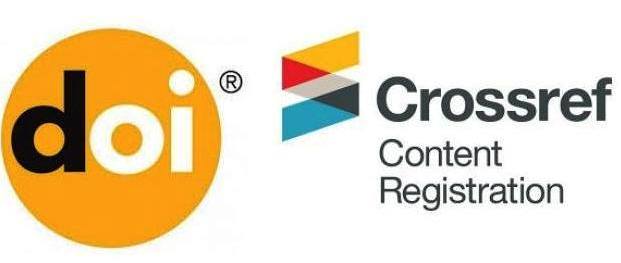Download full text in PDF
Kozyr VS, Petrenko VI, Barabash VI. Influence of natural selection on the reproductive function in bulls. Bìol Tvarin. 2025; 27 (1): 53–61. DOI: 10.15407/animbiol27.01.053.
https://doi.org/10.15407/animbiol27.01.053
Received 04.09.2024 ▪ Revision 12.02.2025 ▪ Accepted 20.03.2025 ▪ Published online 11.04.2025
Influence of natural selection on the reproductive function in bulls
V. S. Kozyr, V. I. Petrenko, V. I. Barabash
This email address is being protected from spambots. You need JavaScript enabled to view it.
Institute of Grain Crops NAAS, 14 Volodymyr Vernadsky str., Dnipro, 49027, Ukraine
The article presents long-term research results on the impact of natural and sexual selection on the reproductive function in bulls under tethered and loose housing conditions. It was found that dominant males within the herd hierarchy have preferential access to resources and mates, resulting in decreased libido, semen quality, and reproductive activity in subordinate bulls. Rank-related stress is identified as a key factor causing impotence and reproductive failure in these animals. Dominant individuals demonstrated superior adaptability, higher sperm production, and neurotypical characteristics associated with leadership. A comprehensive assessment of physiological, ethological, biochemical, and morphological parameters revealed effective strategies for improving housing conditions, mitigating the impact of intrasexual selection, and stabilizing reproductive function in breeding herds. For the first time, the type of higher nervous activity in bulls is proposed as a selection criterion for forming a high-performance breeding stock. The findings are crucial for refining bull management, selection, and application in artificial insemination and genetic improvement programs.
Keywords: bulls, natural selection, sexual function, rank stress, herd hierarchy
- Ahearn JN. Evolution of behavioral reproductive isolation in a laboratory stock of Drosophila silvestris. Cell Mol Life Sci. 1980; 36: 63–64. DOI: 1007/BF02003975.
- Aitken RJ, Hanson AR, Kuczera L. Electrophoretic sperm isolation: Optimization of electrophoresis conditions and impact on oxidative stress. Human Reprod. 2011; 26 (8): 1955–1964. DOI: 1093/humrep/der162.
- Baruselli PS, Ferreira RM, Sá Filho MF, Bó GA. Review: Using artificial insemination natural service in beef herds. Animal. 2018; 12 (1): s45–s52. DOI: 10.1017/S175173111800054X.
- Brito LF, Bedere N, Douhard F, Oliveira HR, Arnal M, Peñagaricano F, Schinckel AP, Baes CF, Miglior F. Review: Genetic selection of high-yielding dairy cattle toward sustainable farming systems in a rapidly changing world. 2021; 15 (1): 100292. DOI: 10.1016/j.animal.2021.100292.
- Burkat VP. Consolidation of Breeding Groups of Animals: Theoretical and Methodological Aspects. Kyiv, Agrarna Nauka, 2002: 51–57. ISBN 966-540-162-9 (in Ukrainian)
- Butler ML, Bormann JM, Weaber RL, Grieger DM, Rolf MM. Selection for bull fertility: A Transl Anim Sci. 2020; 4(1): 423–441. DOI: 10.1093/tas/txz174.
- Cojkic A, Morrell JM. Animal welfare assessment protocols for bulls in artificial insemination centers: Requirements, principles, and criteria. Animals. 2023; 13 (5): 942. DOI: 3390/ani13050942.
- Creciun M, Ghenciu V, Arian I, Tataru CP, Dumbrăveanu I. The effects of auxiliary substances used in doping on male sexual reproductive function. Sanatate Publ Econ Managem Med. 2024; 5(102): DOI: 10.52556/2587-3873.2024.5(102).24.
- Davis TC, White RR. Breeding animals to feed people: The many roles of animal reproduction in ensuring global food security. 2020; 150: 27–33. DOI: 10.1016/j.theriogenology.2020.01.041.
- Dixson AF, Anderson MJ. Sexual behavior, reproductive physiology and sperm competition in male mammals. Physiol Behav. 2004; 83 (2): 361–371. DOI: 1016/j.physbeh.2004.08.022.
- Fisinin RM. Immunity in modern animal husbandry and poultry farming. Anim Husb Today. 2011; 9: 40–47. (in Ukrainian)
- Gekkiyev AD. Improvement of sire evaluation methods in gene pool herds of dairy cattle. Anim Husb Ukr. 2004; 9: 12–18. (in Ukrainian)
- Ghoreishifar SM, Eriksson S, Johansson AM, Khansefid M, Moghaddaszadeh-Ahrabi S, Parna N, Davoudi P, Javanmard A. Signatures of selection reveal candidate genes involved in economic traits and cold acclimation in five Swedish cattle breeds. Genet Sel Evol. 2020; 52 (1): 52. DOI: 1186/s12711-020-00571-5.
- Honcharenko IV. Oogenesis, Spermatogenesis and Selection Challenges in Dairy Cattle. Kyiv, Naukova Dumka; 2003: 38 p. (in Ukrainian)
- Martin MD, Mendelson TC. Male behaviour predicts trait divergence and the evolution of reproductive isolation in darters (Percidae: Etheostoma). Anim Behav. 2016; 112: 179–186. DOI: 1016/j.anbehav.2015.11.027.
- Naqvi SMK, Kumar D, Paul RK, Sejian V. Environmental stresses and livestock reproduction. In: Sejian V, Naqvi SMK, Ezeji T, Lakritz J, Lal R (eds). Environmental Stress and Amelioration in Livestock Production. Springer; 2012: 97–128. DOI: 1007/978-3-642-29205-7_5.
- Oliinyk SO. Ethological characteristics of keeping bulls of different genotypes. Visn Dnipropetrovsk State Agrar Univer. 2002; 2: 131–132. (in Ukrainian)
- Park C, Chapman FA. An extender solution for the short-term storage of sturgeon semen. North Am J 2005; 67(1): 52–27. DOI: 10.1577/FA03-068.1.
- Petrie WM. Sexual effects of antidepressents and psychomotor stimulant drugs. In: Ban TA; Freyhan FA (eds). Drug Treatment of Sexual Dysfunction. 1980; 190–209. ISBN electronic, 978-3-8055-2906-8, ISBN print 978-3-318-03970-2. DOI: 1159/000402337.
- Rioja-Lang FC, Roberts DJ, Healy SD, Lawrence AB, Haskell MJ. Dairy cows trade-off feed quality with proximity to a dominant individual in Y-maze choice tests. Appl Anim Behav Sci. 2009; 117 (3–4): 159–164. DOI: 1016/j.applanim.2008.12.003.
- Roden C, Hilde V, Guy M, Linda VE. Reproductive success of bison bulls (Bison bison bison) in semi-natural conditions. Anim Reprod Sci. 2003; 79 (1–2): 33–43. DOI: 1016/S0378-4320(03)00084-8.
- Tamayo-Canul J, Alvarez M, López-Urueña E, Nicolas M, Martínez-Pastor F, AnelE, Anel L, de Paz P. Undiluted or extended storage of ram epididymal spermatozoa as alternatives to refrigerating the whole epididymes. Anim Reprod Sci. 2011; 126(1–2): 76– DOI: 10.1016/j.anireprosci.2011.04.011.
- Tirpan MB, Olğaç KT, Gürler H, Kaya U. Effects of different equilibration conditions on cryopreserved bovine sperm quality. Kocatepe Vet Dergisi. 2017; 10 (2): 57–62. Available at: https://dergipark.org.tr/tr/pub/kvj/issue/32997/368489
- Turbek SP, Scordato ESC, Safran RJ. The role of seasonal migration in population divergence and reproductive isolation. Trends Ecol Evol. 2018; 33 (3): 164–175. DOI: 1016/j.tree.2017.11.008.
- Wang Z, Gong W, Yao Z, Jin K, Niu Y, Li B, Zuo Q. Mechanisms of embryonic stem cell pluripotency maintenance and their application in livestock and poultry breeding. Animals. 2024; 14 (12): 1742. DOI: 10.3390/ani14121742.
- Zubets MV, Tokarev NF, Vynnychuk DT. Ethology of Cattle. Kyiv, Agrarna Nauka, 1996: 212 p. (in Ukrainian)














